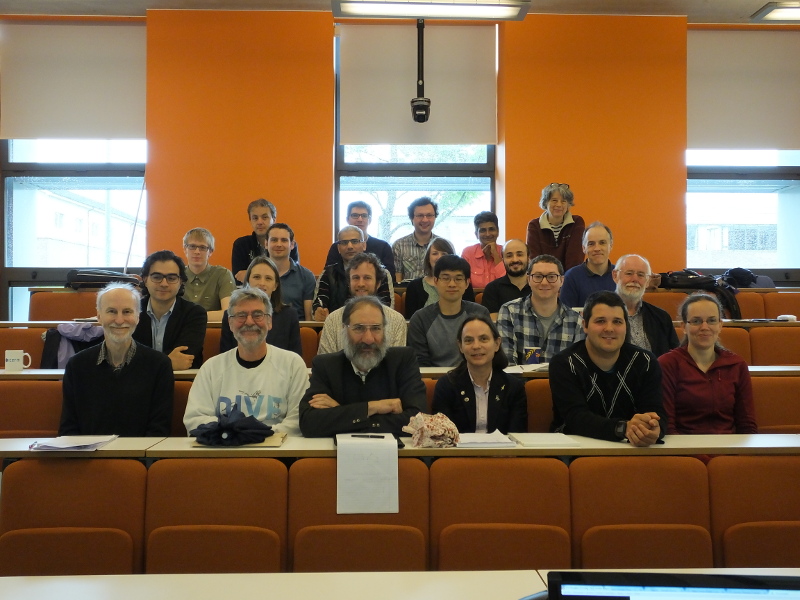The analysis of the rigidity and flexibility of bond-node structures and skeletal frameworks may be traced back to Cauchy and Euler and their considerations of polyhedra with hinged faces. In more recent times bond-node frameworks have played a vital role in mathematical models for crystals and materials, with framework bars representing strong bonds between particular atoms or between rigid polyhedral units. In particular, material zeolites provide diverse periodic networks of corner-linked regular tetrahedra, with striking geometric and topological structure.
In various new directions for bond-node structures, there is great potential for the enrichment of the mathematical models used in materials science. At the same time, the computation of new invariants will benefit from the methodology of simulation and computation familiar to applied scientists.
In previous years, Lancaster's geometric rigidity group have had largely mathematical meetings. This year's meeting had an overtly applied flavour. We hoped the meeting would be of particular interest to the materials science community.
The workshop began after lunch on Wednesday and finished on Friday afternoon. The location was the Postgraduate Statistics Centre and all the talks took place in the lecture theatre (room A54).
Speakers
We had 4 plenary talks given by:
- Miranda Holmes-Cerfon (Courant Institute, NYU) (Holmes slides Bond-node structures 2017)
- Tibor Jordan (Eotvos Lorand) (Jordan slides Bond-node structures 2017)
- Meera Sitharam (Florida)
- Vincenzo Vitelli (Leiden)
These were complemented by a range of shorter talks.
Participants
- Nifeen Altaweel (Lancaster)
- Ciprian Borcea (Rider)
- Bryan Chen (Massachusetts Amherst) (Chen slides Bond-node structures 2017)
- Katharine Clinch (Queen Mary)
- Jim Cruickshank (Galway)
- Sean Dewar (Lancaster) (Dewar slides Bond-node structures 2017)
- Georg Grasegger (RICAM/ JKU Linz)
- Hakan Guler (Queen Mary) (Guler slides Bond-node structures 2017)
- Miranda Holmes-Cerfon (Courant Institute, NYU)
- Bill Jackson (Queen Mary)
- Tibor Jordan (Eotvos Lorand)
- Oleg Karpenkov (Liverpool)
- Lefteris Kastis (Lancaster)
- Viktoria Kaszanitzky (Technical University, Budapest)
- Csaba Kiraly (Eotvos Lorand) (Kiraly slides Bond-node structures 2017)
- Derek Kitson (Lancaster) (Kitson slides Bond-node structures 2017)
- Tony Nixon (Lancaster)
- John Owen (Siemens)
- Stephen Power (Lancaster) (Power slides Bond-node structures 2017)
- Bernd Schulze (Lancaster)
- Harriet Serocold (Lancaster) (Serocold slides Bond-node structures 2017)
- Brigitte Servatius (WPI) (Servatius slides Bond-node structures 2017)
- Herman Servatius (WPI)
- Qays Shakir (Galway)
- Meera Sitharam (Florida)
- Ileana Streinu (Smith)
- Louis Theran (St Andrews)
- Vincenzo Vitelli (Leiden)
Organisers
This meeting was supported by an EPSRC grant 'Infinite bond-node frameworks', a Scheme 1 grant from the London Mathematical Society and the Department of Mathematics and Statistics, Lancaster University.



